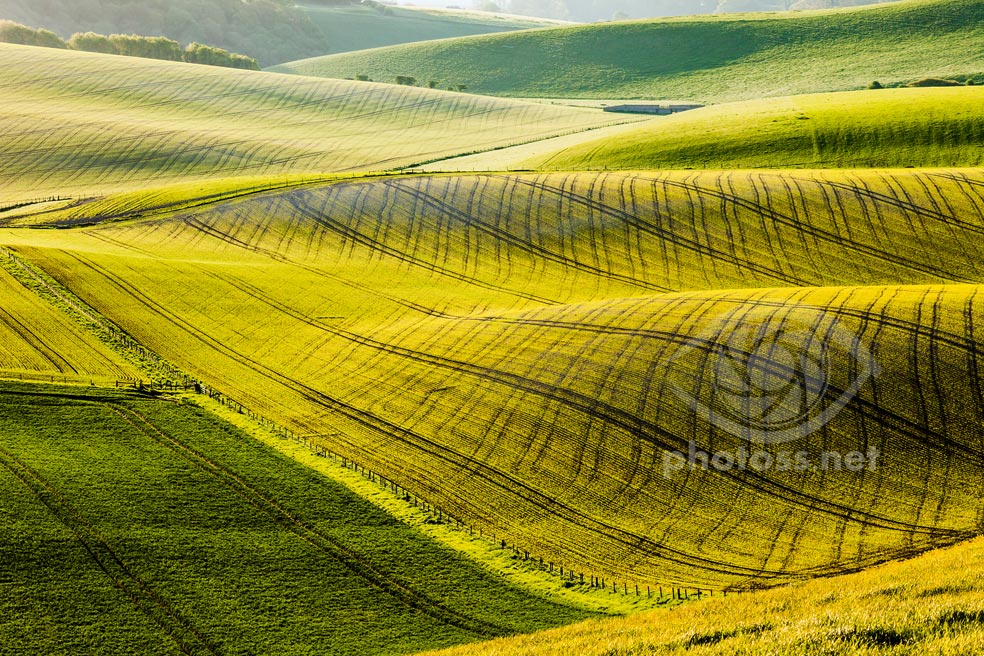Telephoto Landscapes of the South Downs
...AND WHAT MADE ME CHOOSE LANDSCAPE
While South Downs landscapes taken with telephoto lenses have been a strong foundation of my body of work over the past 15 years, it wasn’t my first “serious” focus in photography. In reality, at the beginning of my photographic journey I never thought I’d become a landscape photographer at all, or that I could be any good at it.
I moved to Brighton in mid 2007 from Gdynia in northern Poland. At the time I’d already been into photography for two or three years and birdlife was my main focus. I was lucky enough to live on the edge of a proper forest, on the outskirts of the city. And since I’d always loved nature, setting my sights on birds was a natural choice (after the initial phase of photographing everything and anything). In those days I didn’t really “see”, feel or understand landscape as a subject for photography. And while I did make a few halfhearted attempts at it, nothing survives in my archives.
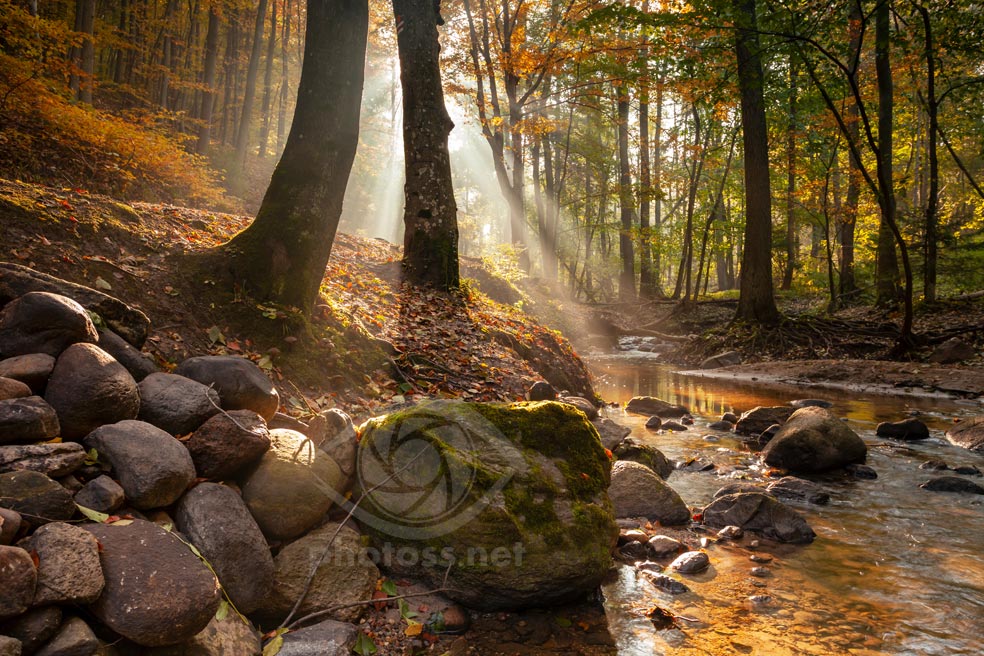 Autumn morning in Tricity Landscape Park, Gdynia. A 15-minute walk from my then place of residence. Taken in late October 2009 during a visit to my family.
Autumn morning in Tricity Landscape Park, Gdynia. A 15-minute walk from my then place of residence. Taken in late October 2009 during a visit to my family. When I was about to leave my hometown, I felt certain I’d pursue bird photography on English soil. I hoped that before long I’d be able to buy more serious equipment, better suited for that purpose (my kit back then was less than modest, and in effect only allowed me to take static images of perched birds). I’d even studied online maps while still living in Gdynia, trying to find potential birding locations around Brighton.
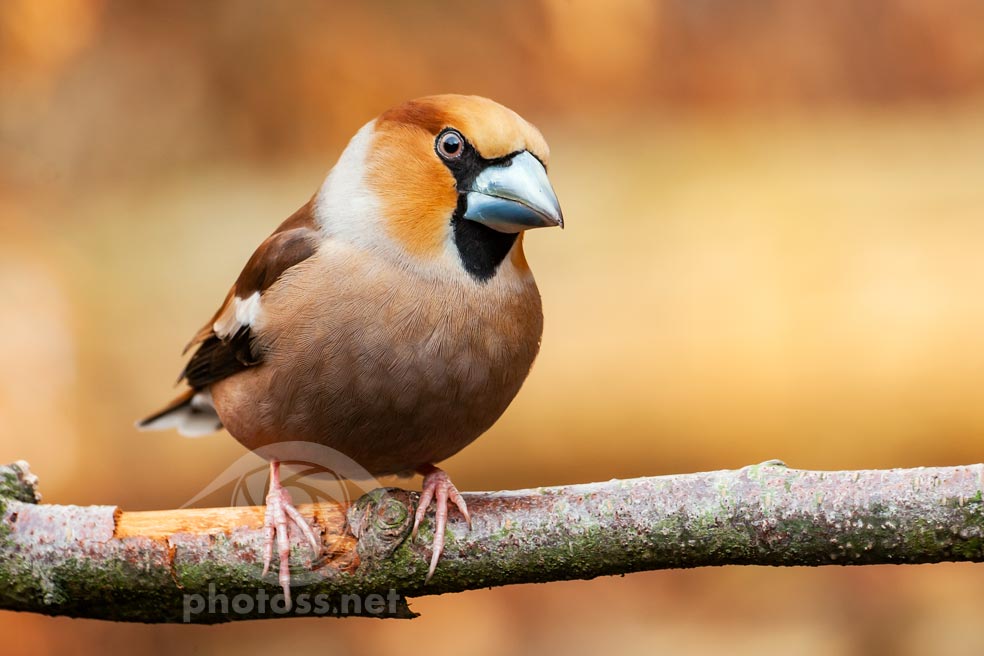
Hawfinch. Taken in early 2007 from a hide I’d built under a fallen spruce, not far from the spot portrayed in the image above.
I was using a Canon 350D with a Sigma 70-300mm lens. In order to squeeze any kind of presentable quality from the lens, I had to stop it down to f/10-f/11. And even at those apertures I still had to avoid the long end, which was unacceptably fuzzy, effectively limiting the focal range to roughly 70-250mm. Even with all those precautions, objects farther away than 2-3 metres still came outa bit too soft for my taste… Obviously, those necessary limitations seriously slowed down my shutter speeds, forced me to increase the ISO, and made it very difficult to achieve that desirable “creamy” bokeh.
Change of scenery
All that soon turned out to be a pipe dream. I was stuck in a city, without a car, having to work menial jobs to survive. Serious bird photography was not feasible. For the next few months, I practically put photography of any kind on hold as I was trying to settle in and find my place in the new environment.
Being naturally curious, however, I shortly began to explore the surrounds of Brighton by public transport. Those excursions gradually opened my eyes to landscape. The scenery around the city was quite refreshing and stimulating, being so different from what I was used to. Especially the South Downs (for I’d always taken the sea for granted given that I’d grown up on the coast). At the beginning of 2008 I started shifting my attention towards landscape photography.

South Downs near Brighton. Late march 2008, possibly my first stab at telephoto landscape. Taken with a Tamron 90mm macro lens, as I felt the Sigma mentioned under the previous image wasn’t really up to scratch…
My first tentative attempts were woefully inadequate. I didn’t feel what made a good composition or how to use lighting effectively. Moreover, as I later realised, I was in fact trying to learn two things at the same time. The first one was how to do landscape photography in general. The second, how to approach photographing the South Downs in particular, which comes with its own set of challenges…
Looking for inspiration and guidance
Finding resources to learn about landscape photography as such was relatively easy. Although it took me some time to start getting results I was happy with, obviously. But when it came to devising an approach to photographing the Sussex downland in a way that would do it justice, I found myself in uncharted territory.
NOTHING TO SEE HERE...
Naturally, I turned to the internet for inspiration. But any photos of the South Downs I was able to seek out at the time were fairly generic. Even if well taken according to photographic craft, they usually failed to capture what I was seeing and experiencing when exploring the hills. The traditional approach to landscape photography, with its use of wide angle lenses, didn’t seem to cut it. And the images I was finding online were taken with this approach.
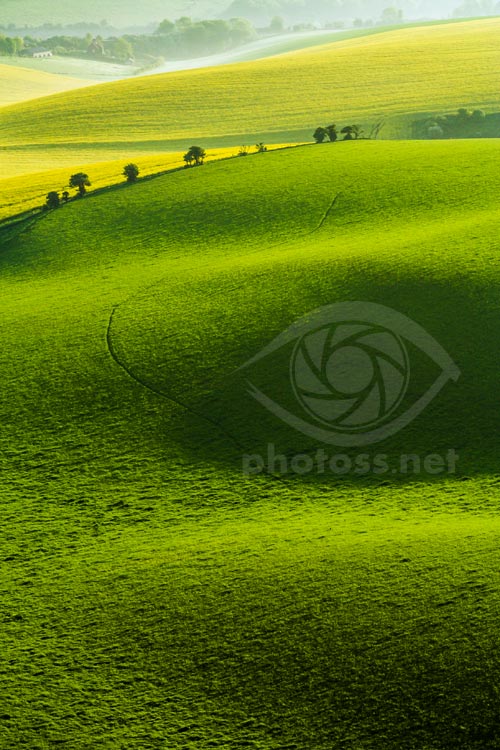
Morning on the South Downs near Brighton. Early May 2008. One of the first successful images in my budding southdown style that I’m still happy with today. Taken again with the Tamron 90mm lens.
DISTILLING THE ESSENCE
It gradually it became apparent to me that the essence of this scenery lay in the gentle curvature of the downs. The play of lines, geometry, the interplay of light and shadow, subtle textures. Not much potential foreground material is available here, especially in the eastern parts of the South Downs, that would lend itself to meaningful wide-angle compositions. Photogenic lone trees are in very short supply, what exists in abundance are rather scruffy looking hawthorns…
There are no rocky outcrops (other than chalk pits, which I find utterly unphotogenic). Fences along fields are mostly very ugly, barbed-wire. When you photograph this landscape with a wide angle, the lens tends to push the “essence” away from the viewer, often beyond recognition, relegating it to mere backdrop.
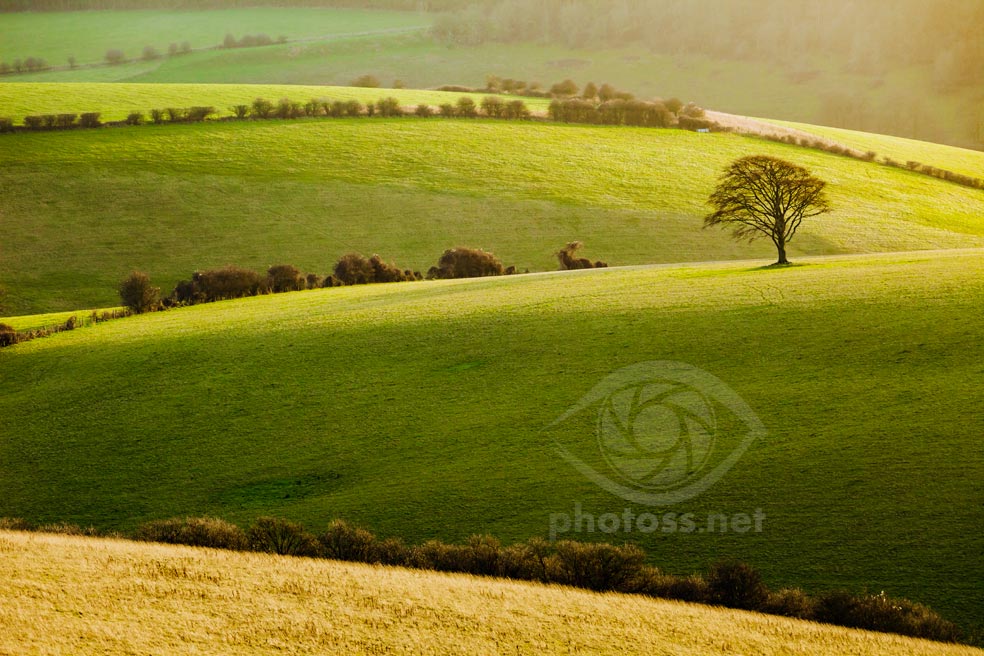
Winter afternoon on the South Downs near Brighton. Quite a rarity on the downs – a solitary tree that isn’t a hawthorn. Taken in early December 2009 with Sigma 100-300mm EX (at 237mm).
And since the Downs lack distinct peaks – the ridges are rather flat – the resulting photos without strong foreground are often very bland and generic. Certainly not “region-specific”; it’s stuff that could have been taken at a number of England’s numerous hill ranges.
CONTINENTAL INFLUENCES
As I couldn’t seem to find any useful hints in the work of local photographers, I broadened the scope of my searches. Eventually, I did find inspiration in the photos of similar subject matter, that is rolling hills and fields, taken at various locations on the continent. Specifically in regions such as Tuscany, Moravia, also certain areas of Poland. I diligently analysed those pictures, trying to find what made them so appealing and effective. Whenever the authors were in a sharing mood, I studied the camera settings, the lenses and focal lengths they used, vantage points, use of lighting, atmospheric conditions, compositions… I was surprised to learn that those images I found so impressive had been taken with such long focal lengths, 200-300mm, sometimes longer. Yet they were still undeniably landscapes.
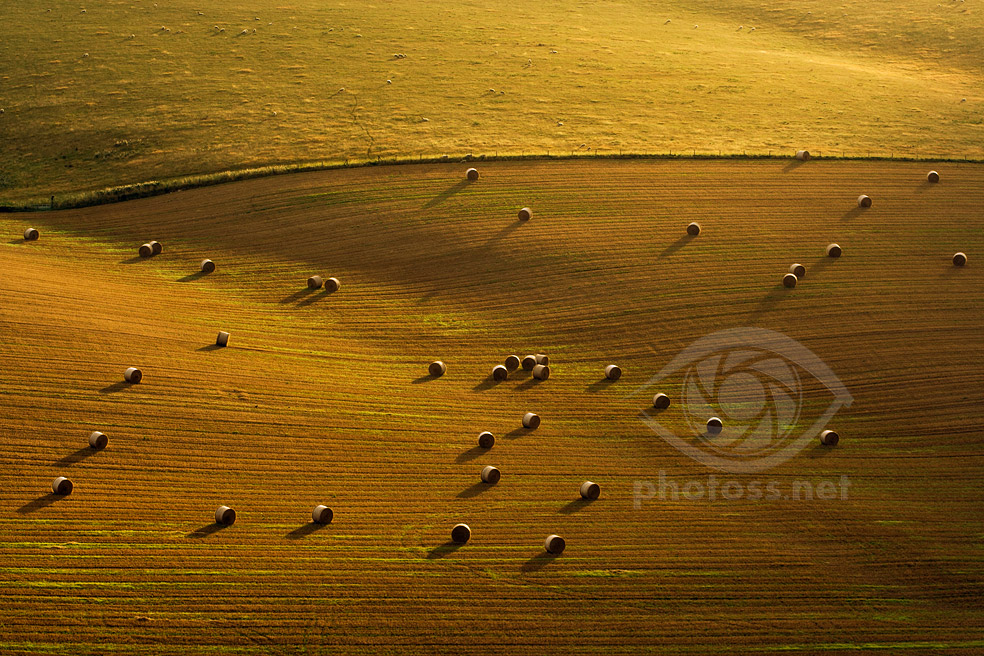
Summer sunrise on the South Downs near Brighton. The downs present opportunities for telephoto landscape even when they’re not green… Taken in late August 2009, commended in Take-a-View LPOTY 2010.
If I were to point to a specific name of a photographer whose work nudged me in the right direction, it would have to be Marcin Sacha. Albeit, he and others representing similar styles (many of whom had been no doubt inspired by Sacha) often paid homage to “pictorialism” in their creations. Which in practical terms usually meant heavy post-processing in order to create dreamy, somewhat unreal scenes.
As my own style was slowly crystalising, I chose to go in the opposite direction. My editing was, and is, very basic and simple. (For detailed information on the processing read this article where I dissect one telephoto landscape.) And it wasn’t due to lack of skill with image editing tools. In fact, I was proficient in Photoshop before I took any interest in photography. And my initial interest in photography actually evolved from computer graphics.
Finding my own voice
After many months of those studies and analyses, miles and miles of literal legwork, and many trials and errors, I started getting satisfactory results in the first half of 2008. I kept refining my South Downs style and finding new locations in the following years. My efforts in this arena brought me some modest recognition, when in three consecutive years (between 2009 and 2011) 10 of my photos were commended in Take-a-View LPOTY competition. 8 of those images were of the South Downs, taken in this style.
Here are the fundamental "ingredients" that make my South Downs telephoto landscape style what it is:
Subject matter
Rolling hills, farmland, gently undulating rural landscapes (probably obvious, given the title of this article, but I feel it still needs to be mentioned). I find the approach doesn’t work equally well on flat or rugged, rocky terrain. It’s the gentle curvature of this kind of scenery that, coupled with some particular lighting conditions, lets me achieve the sculpting, modelling effect on the terrain.
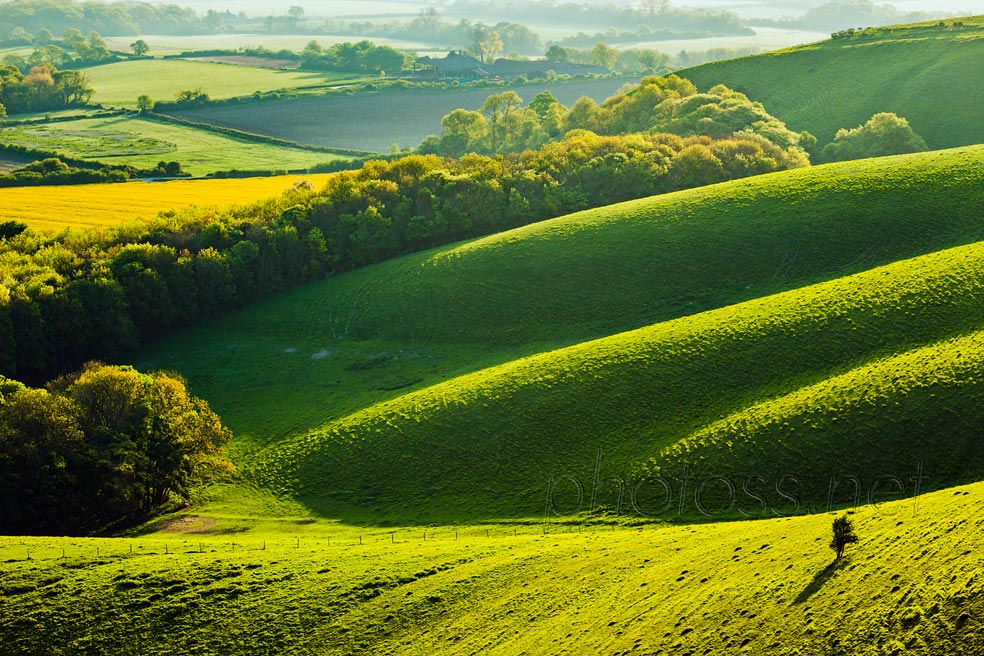
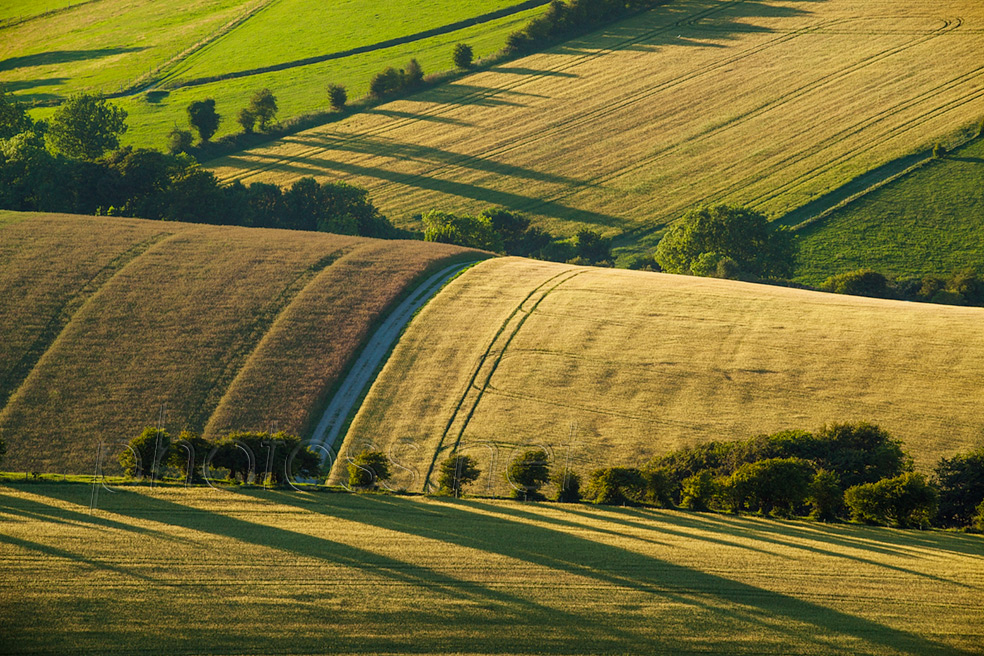
Use of telephoto lenses
Focal lengths starting at roughly 100mm and above on a full-frame camera (or equivalent for differently sized sensors). Those focal lengths let me focus on the subtle geometry of the hills and make that a feature of the picture, rather than just a backdrop. As long lenses “flatten” the perspective, this is also partly responsible for the abstract character, along with the general absence of skies.
Vantage point
Typically high, looking down at my subject matter. Long lenses have shallow depth of field, but the distance between the camera and the scene (normally hundreds of metres or more) easily nullifies that. My go-to aperture setting is f/8, which in most situations is enough to fit everything within the DoF. There are exceptions, like in this image taken at the foot of the downs. Since the content of the frame was very close to the camera, I had to spend a lot of time focusing carefully in order to achieve sharpness across the frame.
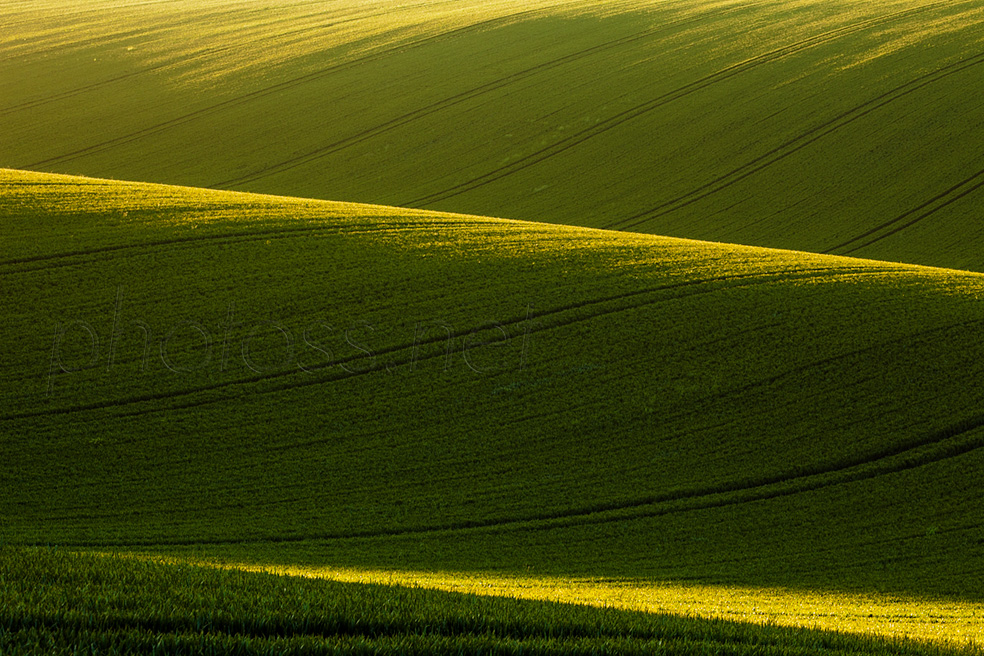
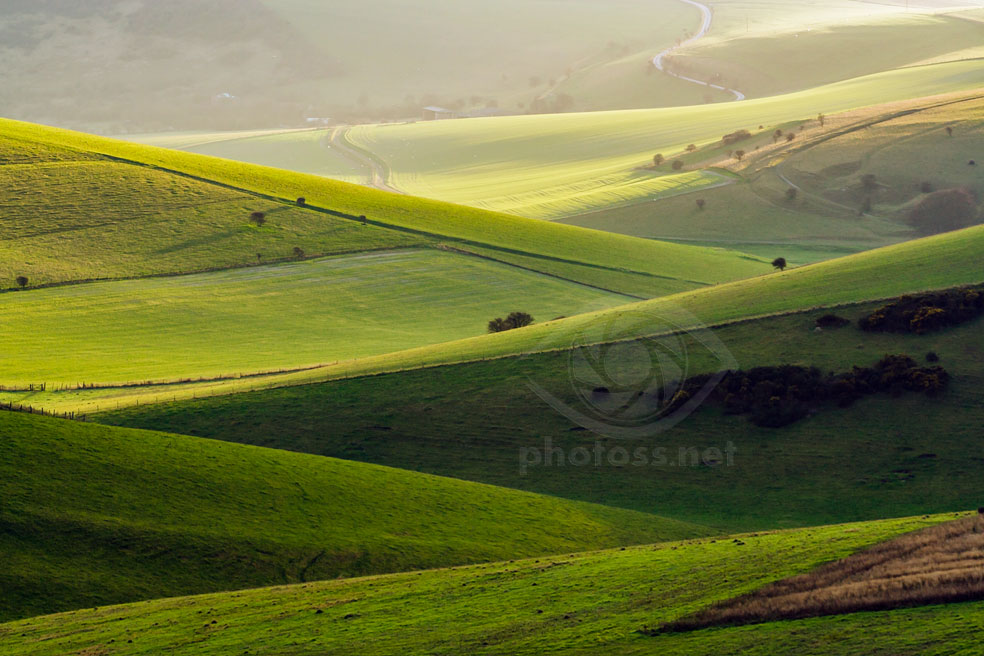
Lighting
sculpting, modelling the terrain through the play of light and shadow. In practice, early morning, or evening, shortly before sunset. But at the same time, coming at least from the side, often from in front of the camera. Light coming from behind the camera typically yields flat looking images, even at sunrise or sunset, because then you can’t appreciate that crucial play of light and shadow. So, lighting and choice of location/vantage point go hand in hand.
No skies
I’m usually careful to keep the sky out of the picture. Since I so often have the sun somewhere in front of me in these scenes, and low above the horizon, typically the inclusion of sky creates excessive contrast in the frame. The area where the sky meets the land becomes the focal point of the photo and draws the viewer’s attention away from where I want it to be – focused on the subtle curvature of the hills. But there are numerous exceptions when the sky can work well and be part of the composition.
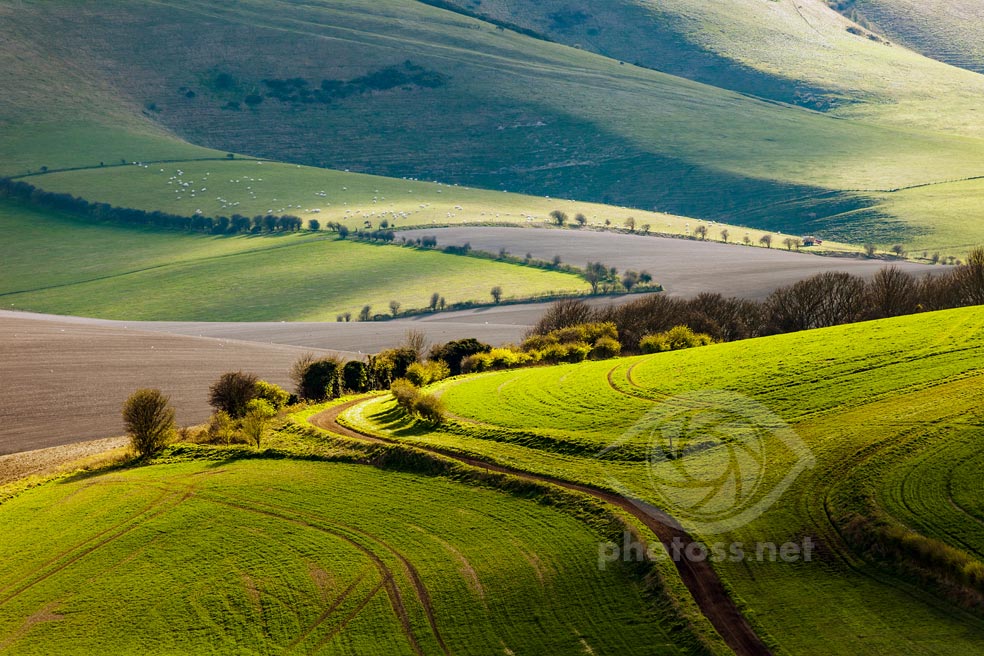
I have since broadened my horizons and gradually expanded my interests into other subjects and approaches. Seascapes, woodland scenes, architecture, villages, towns, cityscapes, blue hour, long exposures… In late 2011 I started running photography workshops. Firstly on the South Downs, but in time at various other locations, as my level of confidence and competence grew. Around the same time I gave my first presentations to local camera clubs. Which helped me solidify and systematise my skills and knowledge.
Over the past few years my work in this vein has been rather infrequent. In 2008-2010 the style was novel. Since then other local photographers started producing similar images. Besides, I love exploring, discovering new places, as well as new ways of expression. But the South Downs made me take the most important step into landscape photography – the first one. They “taught” me to appreciate landscape, and fostered my photographic creativity (as nothing here is really given on platter, the compositions are not obvious). For that reason they’ll always have a special place in my heart.
Thank you for reading. Check out other similar articles in my Landscape Photography is Simple “blog”. Or click on a random post below.
Short Long Exposures is that an oxymoron?… Surely, the title

